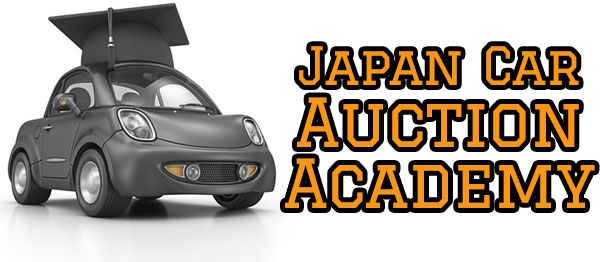 The Backstory
The Backstory
Let’s just backtrack a little and remember how we get into this situation where we are negotiating through the auction directly with the seller to try to buy a car.
(If you haven't read about the different auction bidding outcomes, you may want to go there first before you read more about negotiation.)
Here’s the backstory: First of all, the car was in the regular auction and we were bidding on it live to try to buy it for you. Unfortunately, the bidding petered out short of the seller’s reserve price, so the auction house stopped the live bidding without the car actually selling to anyone.
A real-life example of negotiation
Now we have caught you up, imagine this is one of your bids and you see a comment in our online auction system which looks like this:
"Passed for ¥570,000. Offers from ¥620,000."
Let's unpack what that means. First of all, "passed" means that the car failed to sell in live bidding, because the highest bid did not reach the seller's reserve price. Secondly, the auction has indicated that we can enter into negotiations for this car, but the minimum we will need to offer in order to do so is ¥620,000.
If we imagine that you are having us bid for this car, and your maximum bid price is ¥700,000 then, of course, we would immediately enter into negotiations to try to buy it for you because your maximum price is above the minimum ¥620,000 that we need to offer.
Now, just because we can make offers from ¥620,000, does not mean that the seller will necessarily accept our ¥620,000 offer. In the course of negotiations, we may find, for example, that the seller is looking for ¥680,000. In that case, we would still try to negotiate him down to a lower price, but ultimately ¥680,000 is still within your budget (in this example), so we would proceed to buy the car for this price.
On the other hand, if the seller said that the lowest price he is prepared to accept is ¥750,000, then your budget will not stretch to that, and we are left with no choice but to walk away.
Of course, you may log in later, see what he wants, and tell us that we can proceed at ¥750,000. The thing is that this is often not successful for several possible reasons:
First, the auction may already be closed. If you are in a different time zone, you may be seeing the message a long time after we entered it, and so it may be too late.
Second, if there are several people wanting to make offers for the car, we may have lost our place in the line if we turned down that option to buy at ¥750,000.
Negotiation is first come, first served
So you need to bear in mind that, when it comes to negotiating for cars that did not sell in live bidding, the auctions operate a first come, first served system.
The first person making an offer at the minimum price gets the first chance to negotiate with the seller. This is why it is crucial that we know your full budget in advance so that we can immediately make an offer for the car, without having to wait for your feedback. (We don’t want to be put at the back of the line behind all the other potential buyers.)
You see, even if we have more budget than the person in front of us, if the seller accepts that person's offer, then we never get the chance to make our better offer.
We handle it for you
Although this may seem quite complex, most of this is handled by us in the background and is not something which you need to be too concerned about. The main reason for this explanation here is so that you can understand what is happening with your bids when you see comments in the system about cars being "passed" or bought in "negotiation".

We find that the most successful importers really understand how it all works - from the auction to the ship and beyond. Don't get left behind!


